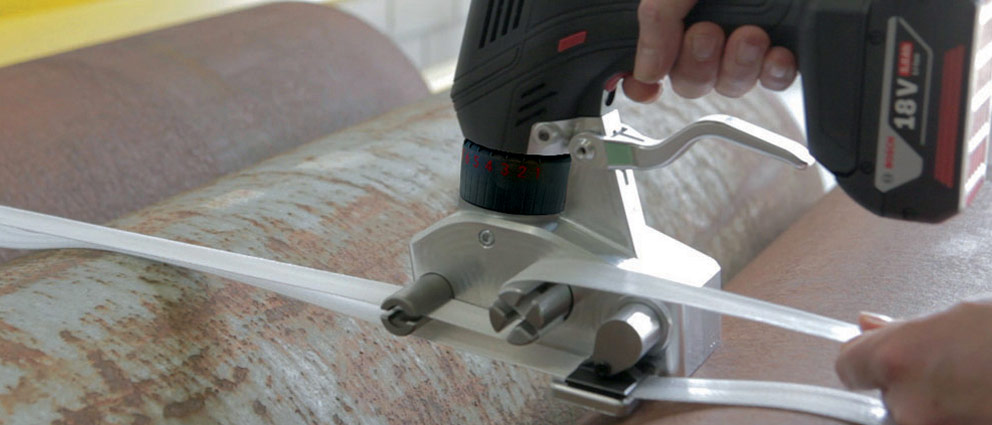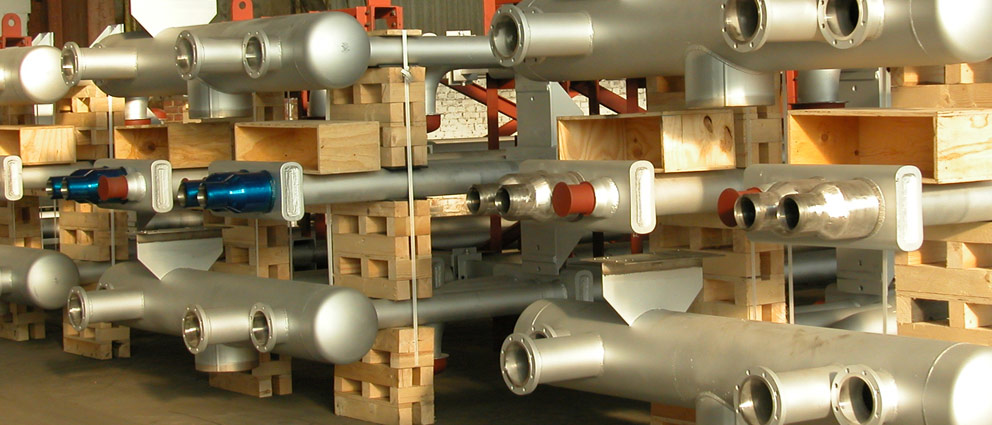Cordstrap have experts across the globe who specialize in the safe transportation of construction materials on various modes of transport. One of the questions our experts are asked most frequently is, “what are the risks of using steel banding and why should we switch to polyester strapping?”
Our experts have set out the risks and impacts of using steel banding, taking a practical example of the securing, transportation and unloading of construction materials by one of our customers.
When we visit a plant that works with steel strapping, safety regulations require us to wear hand and eye protection as a bare minimum.
Safety precautions are essential around steel strapping. One of our experts met a 20 year-old worker who had suffered a severe injury to his hand. He had been applying tension to a razor-sharp steel strap when it came loose. It cut his hand from his thumb to his wrist.
Serious tension can be applied to polyester strap, but it won’t cause dangerous problems if it loosens. This lowers the risk of injuries – which for many of our customers is the most important reason to switch from steel to polyester strapping.
Tensioning demonstrates another advantage of polyester. Steel requires two tools for this process, and these are expensive to maintain because of metal on metal wear. Polyester strapping can be applied with one tool that can last for many years. Making it easier to work with and faster to apply.

People often can’t believe that a polyester strap is a strong as steel. We then always do a simple test to show the difference. We secure a bundle with both types of strapping, and then drop the bundle from a height of two feet using a truck or forklift.
When strapping is used to bundle products together, there is a big difference in the behavior of polyester and steel. Steel has very little elasticity. This means that quite normal movements in transit, such as sudden lane changes or stops, can result in stretching. There can even be failure, as the crimp or seal of the steel strapping is much weaker than its linear strength. By contrast, polyester strap can move without deformation or permanent elongation and always holds a load firmly.

Another example our team encountered was with a customer who transports 1500 pound forklift masts on pallets. When the powder coating damaged during transit, it would cost the supplier $8,000 to fix the problem. This is on top of having an unhappy customer who would have to wait for a replacement product. When we converted them from steel strapping to polyester strapping, the number of incidents declined from one every other week to none. This meant huge cost savings for the supplier and a happy customer.
Sudden movement of a rail car, truck or ship can cause straps to move during transit. If they are made of steel, the finish on powder coated or galvanized products can be scratched. This problem is eliminated with polyester straps.
When unloading, there is a further risk of injury when steel strapping is cut. And in addition, polyester is easier to dispose of, as steel strapping retains its original form.
Compared with steel polyester strapping is
For expert advice on cargo securing solutions contact us now
Contact now